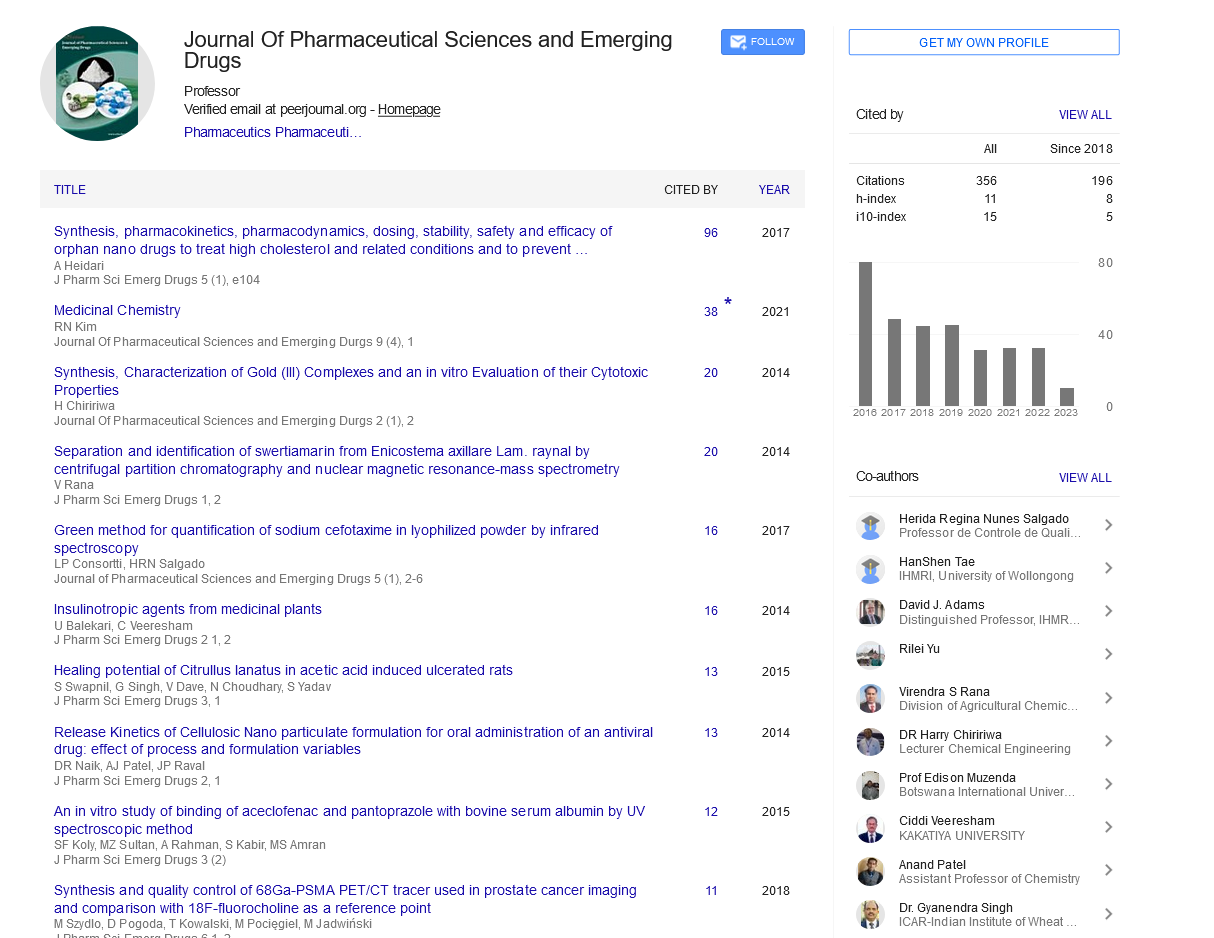Opinion Article, J Pharm Sci Emerg Drugs Vol: 12 Issue: 3
Revolutionizing Drug Discovery Processes from Trials to Therapeutics
Thomas Mike*
1Department of Pharmacology, National Institutes of Health, Bethesda, United States of America
*Corresponding Author: Thomas Mike,
Department of Pharmacology, National
Institutes of Health, Bethesda, United States of America
E-mail: thomas@gmail.us
Received date: 22 May, 2024, Manuscript No. JPSED-24-148994;
Editor assigned date: 24 May, 2024, PreQC No. JPSED-24-148994 (PQ);
Reviewed date: 07 June, 2024, QC No. JPSED-24-148994;
Revised date: 14 June, 2024, Manuscript No. JPSED-24-148994(R);
Published date: 21 June, 2024, DOI: 10.4172/2380-9477.1000189
Citation: Mike T (2024) Revolutionizing Drug Discovery Processes from Trials to Therapeutics. J Pharm Sci Emerg Drugs 12:3.
Abstract
Description
Drug discovery is a complicated and multifaceted process that has traditionally been characterized by lengthy timelines, high costs and significant challenges in translating laboratory findings into marketable therapies. However, recent advancements in technology, methodology and collaborative frameworks are revolutionizing the drug discovery, making it more efficient and effective. This transformation holds the promise of delivering innovative treatments to patients faster than ever before. Historically, drug discovery has followed a linear model, beginning with basic study to identify potential drug targets and culminating in clinical trials and regulatory approval. This process often takes over a decade and can cost billions of dollars. Only a small fraction of these compounds ever makes it to human trials, with many failing due to safety concerns or lack of efficacy.
The introduction of advanced technologies is fundamentally reshaping the drug discovery. One of the most significant innovations is the application of Artificial Intelligence (AI) and Machine Learning (ML) in the early stages of drug discovery. These technologies can analyze vast datasets to predict how different compounds will interact with biological targets, significantly speeding up the hit identification process. AI can also assist in lead optimization by simulating chemical interactions, reducing the need for time-consuming laboratory experiments. Moreover, the integration of big data and bioinformatics has enabled studiers to identify novel drug targets and biomarkers with unprecedented accuracy. By leveraging data from genomic, proteomic and metabolomics studies, scientists can better understand disease mechanisms, allowing for more targeted therapeutic strategies.
In addition to technological advancements and collaborative frameworks, a greater emphasis on patient-centric approaches is further transforming drug discovery. Incorporating patient insights and preferences throughout the drug development process ensures that the resulting therapies address real-world needs. Patient-reported outcomes, real-world evidence, and community engagement are becoming integral to defining clinical endpoints and understanding the therapeutic landscape. This shift not only enhances the relevance of the research but also increases the likelihood of successful market adoption.
Another key factor in revolutionizing drug discovery is the shift towards collaborative frameworks. Traditional silos in study and development are increasingly being dismantled as academia, industry and regulatory bodies work together to streamline processes. Public to private partnerships and consortia are becoming common, allowing for resource sharing, knowledge exchange and pooled funding. For example, the Accelerating Medicines Partnership (AMP) is a collaborative initiative that aims to identify new drug targets and biomarkers for diseases such as Alzheimer’s and autoimmune disorders. By bringing together various stakeholders, including pharmaceutical companies, non-profit organizations and government agencies, AMP accelerates the discovery process and reduces duplication of efforts.
Conclusion
Regulatory agencies are also adapting to the changing landscape of drug discovery. These innovations allow for more flexible study designs and faster patient access to promising therapies, ultimately shortening the time from lab to market. Revolutionizing drug discovery processes is essential for addressing the growing demand for new and effective treatments in an increasingly complex healthcare landscape. By harnessing advanced technologies, fostering collaborative frameworks and embracing regulatory innovations, the drug discovery process is becoming more efficient, reducing the time and costs associated with bringing new therapies to market. This transformation not only holds promise for pharmaceutical companies seeking to innovate but, more importantly, for patients who are eagerly awaiting breakthroughs in treatment options.
 Spanish
Spanish  Chinese
Chinese  Russian
Russian  German
German  French
French  Japanese
Japanese  Portuguese
Portuguese  Hindi
Hindi 